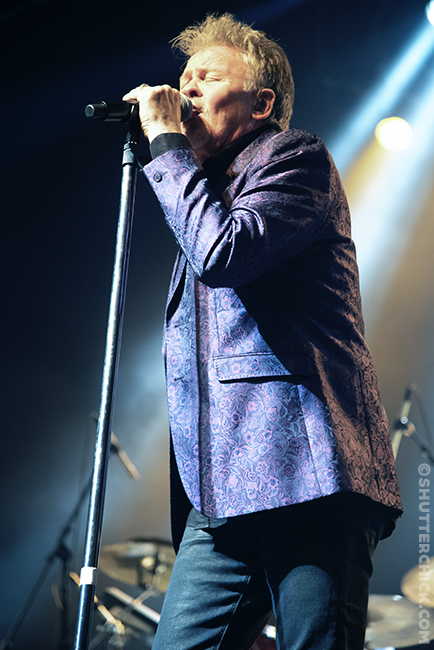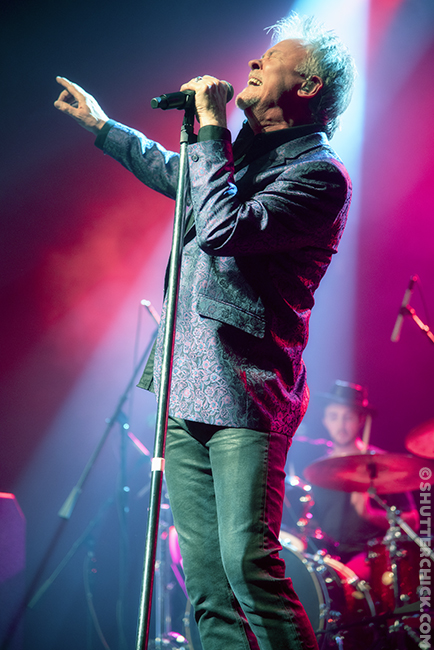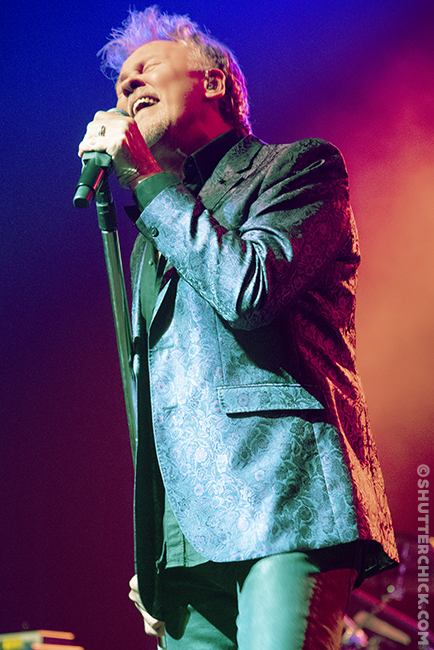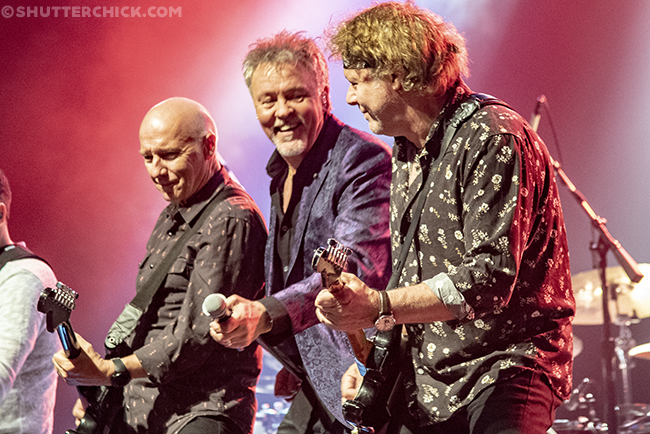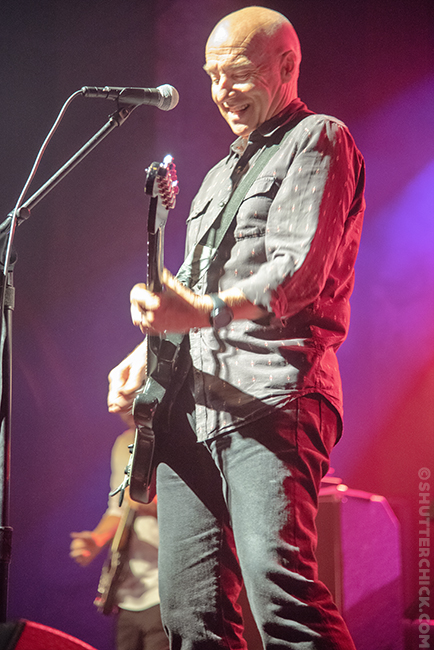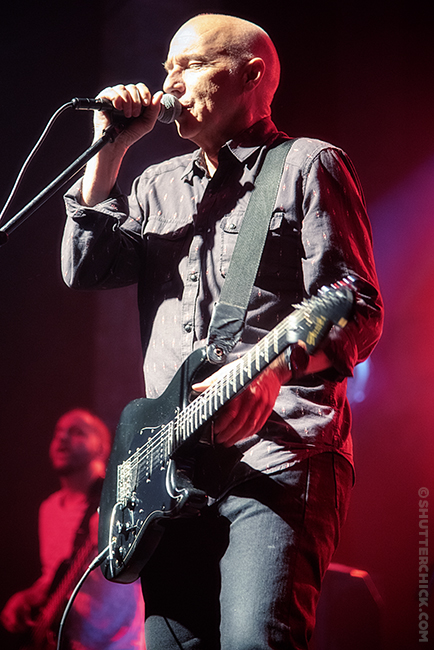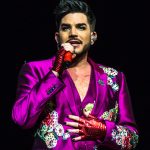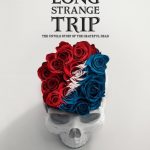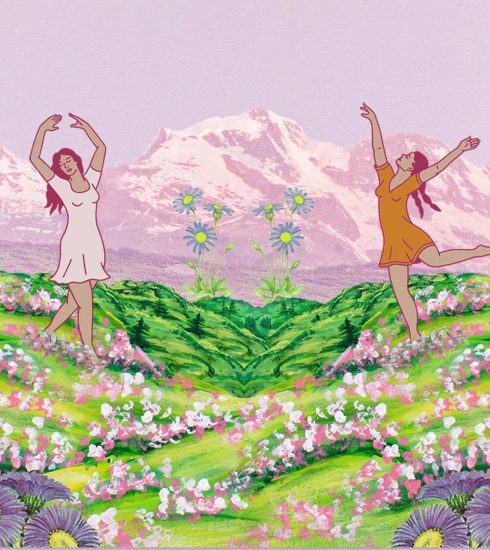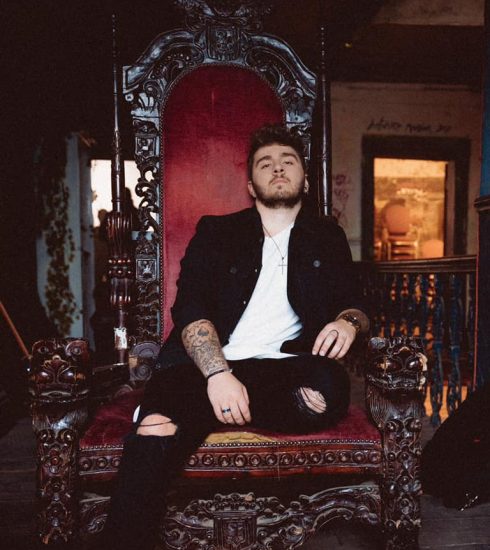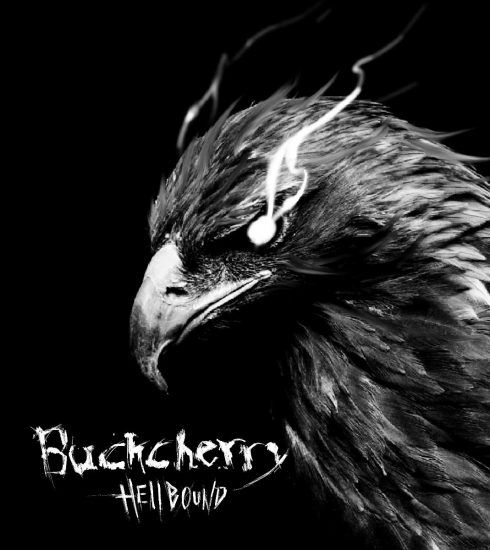Paul Young and Midge Ure at The Paramount
There’s a war waging between East and West Coast music scenes that has turned ugly since late March. Unlike the rap war of the 90s that culminated in the deaths of Tupak Shakur and Biggie Smalls, this battle has been waged online amongst very opinionated 40 and 50-somethings resulting in some off-color language and occasional pettiness.
Showtime began airing the documentary “Dare to be Different” at the end of March, kicking off a back and forth between new wave fans in Los Angeles and New York. The movie is about WLIR, the Long Island radio station that employees and fans claim was the first to play every new wave and alternative band of the 80s. That claim has infuriated Angelenos who insist KROQ aired those bands first. The debate has created many heated exchanges not just on music websites, but on the Facebook feeds of scores of people who haven’t worn a pair of Capezios or Doc Martens in at least 30 years.
Both stations adopted a modern rock format in the late 70s and, being in the two largest radio markets in the country, had access to music earlier than stations in other cities. Some great stories are floating around about the herculean efforts staff endured to get the first copies of the latest singles from the UK, but aggressive back patting and variations on “FIRST” continually being bandied about have overshadowed them.
WLIR was the first to play Duran Duran and KROQ broke The Go-Gos, but new wave was going to happen one way or the other. Blondie, The Police, Joe Jackson, and Gary Numan all had Billboard ranked singles in 78-80 and thanks to the “Disco Sucks” fiasco in Chicago in 1980, everyone was looking for something new.
MTV launched in ’81 with a moon man and the new wave classic, “Video Killed the Radio Star”, and suddenly kids from all over the country were clustered around their televisions waiting to watch the latest clips. MTV brought Simon le Bon and his fedora into living rooms, but lots of great bands would never have made it out of the big cities if it weren’t for Radio International’s, “Rock Over London”.
The syndicated show aired weekly in 175 markets and introduced listeners to bands MTV wouldn’t touch for various reasons. Sure, WLIR and KROQ were playing the latest from across the Atlantic, but it was host Graham Dene that brought Kate Bush, Depeche Mode, Siouxie and the Banshees, and Ultravox to the masses. It was because of my weekly obsession with “Rock Over London” that I braved Long Island traffic to stand amongst WLIR listeners to see Paul Young and Midge Ure on the “Soundtrack of Your Life” tour.
There are lots of Gen-Xers that would scoff at the suggestion that Ure and Young featured prominently in their lives, but for anyone obsessed with new wave, their songs were a necessary inclusion to any well-curated mixtape. “Dancing With Tears in My Eyes” by Ultravox and “Come Back and Stay” by Young were particular favorites in the years before “120 Minutes” became a weekly mainstay on MTV.
Midge Ure opens the show
Ure may have been the lesser known on the bill, but his tenure in both Visage and Ultravox gave him the edge in synth-pop bona fides. He opened the show with “Passing Strangers”, the second single off of 1980’s Vienna, inspiring yelps of recognition from the audience. The album was the first Ultravox record to feature Ure in a variety of roles, including lead singer. It catapulted the band from middling success to the top of the charts throughout most of Europe.
Before joining Ultravox, Ure had been one of the founding members of new romantic pioneers, Visage. Big personalities plagued the band, but they nonetheless managed to release several successful albums in the UK. Ure remained in the group, despite the drama, for the first two albums, leaving after 1982’s, The Anvil, to focus entirely on Ultravox.
His set at The Paramount hit all of the high points of his career including the Visage hit “Fade to Grey” and “I Remember (Death in the Afternoon)” from Ultravox’s Rage in Eden.
Outside of “Do They Know It’s Christmas”, the ubiquitous Christmas single Ure co-wrote and produced with Bob Geldolf, the biggest success Ure had in the US was with the second single from his 1988 solo album, Answers to Nothing. “Dear God” barely cracked the Billboard Hot 100, but it was popular enough on AOR stations to take it to #5 on the mainstream rock chart. Ure included it along with a few other solo tracks in the set, including “Become” from 2014’s, Fragile. The solo songs explained why Ultravox excelled once Ure joined and Visage faltered once he left. Ure has an entirely unique voice, but his real talent has always been as a songwriter.
The two biggest songs of the night were undoubtedly, “Vienna” and “Dancing With Tears in My Eyes”. They may not have been mainstream hits in the US, but they were trendy in clubs and on alternative radio. If Ure has lost any of his range in the last 40 years, it wasn’t evident by his performance of the vocally challenging tracks. If anything, the saturnine “Vienna” inspired even more melancholy a few decades on. Thankfully, the set ended with the more upbeat “Dancing” or else the venue might have gone old school goth before Paul Young had a chance to set foot on stage.
Soulful Paul Young
Midge Ure never found mainstream success in the US, but Young became an MTV darling with “Come Back and Stay” from his first solo album, No Parlez. The song became a top 40 hit, and several more successful singles followed. The release of The Secret of Association in 1985 gave him a #1 in the US with, “Every Time You Go Away”, a ballad originally written by Daryl Hall of Hall and Oates fame. Young had a few more chart hits, including “Oh Girl” and “What Becomes of the Broken Hearted”, but by the early-90s, his solo career had fizzled out everywhere outside of the UK.
His set at The Paramount made it clear that while many of his US fans considered him a new wave artist, his heart has always been in Motown. Most of Young’s career has been devoted to American R&B – his early 80s turn to new wave was more of an anomaly than the norm. His choice to open his performance, “Some People” from 1986’s Between Two Fires, was an excellent example of the more soulful influences on his music. The crowd responded with toe tapping and head bobbing, but there was a much more enthusiastic reaction to the next two songs.
“Love of the Common People” was released following the success of “Come Back and Stay”, finding modest chart success despite limited airplay on MTV. Young discovered it was a fan favorite while on the Retro Futura tour last summer, but his odd placement as the second performer each night only allotted him four songs, and it didn’t make the cut. He promised audiences he would be back this summer and would include the song in the setlist. Not surprisingly, the song got a keen response from the Paramount crowd.
Young introduced the title track from No Parlez by announcing an upcoming UK tour to celebrate its 35th anniversary. The audience responded with excitement and its strong, rhythmic beat and dark lyrics made it one of the highlights of the night.
A series of ballads followed, broken up by “Slipped, Tripped, and Fell in Love” from the 2016 album, Good Thing. Few artists from the 80s could serenade an audience as effectively as Young, but the slower songs seemed to suck a lot of the energy out of the room. By the time he got to “Get ‘Em Up Joe”, a bouncy track from his time with The Q-Tips, the crowd had lost a lot of the zeal they had a short time earlier. It didn’t help that he abandoned the upbeat, danceable version of 1985’s “I’m Gonna Tear Your Playhouse Down” for a more soulful take on the Ann Peebles cover.
He ended his set with the two songs everyone had come to hear. It was easy to forget three decades had passed since “Every Time You Go Away” topped the charts as the crowd swayed their arms along to the music. “Come Back and Stay” got the loudest response of the night bringing the concert back to the high point it was at before it descended into Ballad Land.
Young’s performance likely would have fared better had he been on a bigger stage. The hallmark of his live shows was always the way he used the microphone stand as a collaborator, but it was impossible to jut the mic stand out to woo the audience or perform a spirited spin on the Paramount’s stage. A few more upbeat songs, particularly from his first two solo albums, wouldn’t have hurt either.
Song choice and space notwithstanding, Young has lost none of his soulfulness or charm and, as with Ure, time hasn’t hampered his voice. Perhaps the one benefit to including so many Motown-influenced songs was that his set never sounded like a relic of the 80s.
Ure joined the band on stage to perform, “The Boys are Back in Town”. The Thin Lizzy classic felt like an odd fit for two artists best known for new wave music, but since Ure was once a member of the 70s classic rock band, it was a fun way to end the evening.
The “Soundtrack of Your Life” tour will start its second leg on August 23rd in Vancouver and will include stops on the West Coast, Texas, and Florida. If that isn’t enough, both artists have a series of solo dates scheduled here and abroad.
